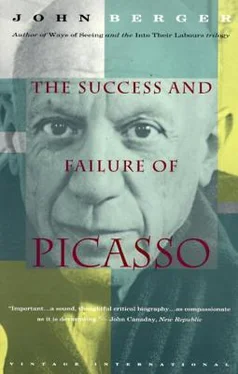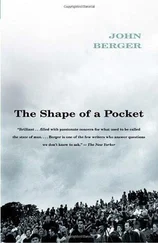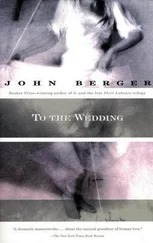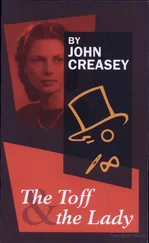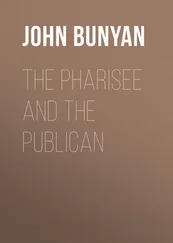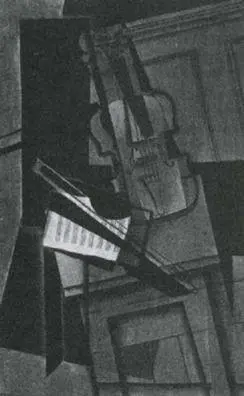
46 Gris. The Violin. 1915
The problem is a social one and it can only be answered socially. We have to consider the social function and content of Juan Gris’s paintings and of Parade. We have already examined the social content of Cubism. As for the social function of Gris’s paintings, at the time they had almost none. Gris was extremely poor during the war, and had the greatest difficulty in selling or exhibiting any of his pictures. In the long-term sense, their function was to express and preserve a way of seeing, based upon an order which accepted all the positive possibilities of modern knowledge. In other words Gris painted these pictures as though the war had not happened. You can say: he chose to fiddle whilst Rome burned. But, unlike Nero, he was not ultimately responsible for the fire and he was not in public. It was Gris’s loneliness that made it possible for him to ignore the war without a loss of integrity. Even today there are still liable to be pockets of exemption anywhere and if an artist finds himself in one of these, the result can, paradoxically and in the fullness of time, be of considerable social value. European culture would be poorer if Gris had not continued to paint benign, untroubled still-lifes during the First World War. But one must always remember that success, by qualifying the loneliness, also destroys the genuineness of the exemption. Success turns an artist who continues to claim exemption into an escapist, and those who are escapists from their time are the first to be forgotten with their time. They are like flatterers who never outlast their patron.
The case of Parade was quite different from that of Juan Gris. Parade was very much a public manifestation. It was meant to be provocative and to shock. The justification given for this was that it expressed contemporary ‘reality’. Cocteau rejected Apollinaire’s adjective of surrealist, and actually insisted upon calling the work a ballet réaliste. Obviously its ‘reality’ was not that of the Cubists — austere, ordered, hopeful. It was frenetic and irrational and, whether its creators realized it or not, it could only be justified by reference to the war. The audience who shouted ‘ Sales Boches! ’ made the right connexion. But, according to their habit, they only used the connexion to add to their complacency.
The objective social function which Parade performed was to console the bourgeoisie whom it shocked. (I say objective to distinguish the true effect of the ballet from what its creators may subjectively have hoped it would achieve.) In this respect Parade set the precedent for a good deal of so-called ‘outrageous’ art that was to follow. Its shock-value was the result of its particular spirit — its disjointedness, its frenzy, its mechanization, its puppetry. This spirit was a reflection, however pale, of what was happening. And what was happening was infinitely more shocking on an infinitely more serious level. Why Parade — however beautifully Massine danced — can be criticized and finally dismissed as frivolous is not because it ignored the war, but because it pretended to be realistic. As a result of this pretence it shocked in such a way as to distract people from the truth. It substituted, as it were, an ounce for a ton. The madness of the world, they could say, was the invention of artists! The audience who shouted ‘ Sales Boches! ’ felt, at the end of their evening, more patriotic than ever, more certain than ever that the war was noble, reasonable, etc. A performance of Les Sylphides would not have had the same effect.
The age of essential politics had begun. The baa-ing infantrymen knew this — even if they could not see a way out. Cocteau, Picasso, even Apollinaire did not yet realize it, because they still believed in the possibility of art staying separate. The bitter irony of this is revealed in the spectacle of Apollinaire pacifying a bourgeois audience, whom he loathed and despised, on account of the wounds he had received as their war hero: wounds from which in eighteen months he would die.
Stupid people often accuse marxists of welcoming the intrusion of politics into art. On the contrary, we protest against the intrusion. The intrusion is most marked in times of crisis and great suffering. But it is pointless to deny such times. They must be understood so that they can be ended: art and men will then be freer. Such a time began in Europe in 1914 and continues still. The ballet Parade is one of the first examples in which we can see the difficulties facing art in the present situation. For the first time we see the modern artist serving, despite his own intentions, the bourgeois world and therefore sharing a position of doubtful privilege. The rest of the story of Picasso’s life is the story of how he has struggled to overcome the disadvantages of this position.
When Picasso came to London in 1918 he stayed at the Savoy Hotel. He no longer saw couples at a café table beyond hope or redemption. And the place of acrobats or horse-thieves was taken by waiters and valets. It would be trivial to mention this, were it not typical of Picasso’s new life. Having ‘shocked’ the distinguished and the wealthy, he joined them.
His former friends, and especially Braque and Juan Gris, considered his new life a betrayal of what they had once striven for. Yet the problem was not simple. Braque and Gris, in order to continue as before, had to retreat within themselves. Picasso chose instead to go the way of the world. The private details involved need not concern us. What we need to know is how his spirit, his attitudes, were changed.
The change was dramatic, as you can see immediately in this portrait of his future wife in an arm-chair:
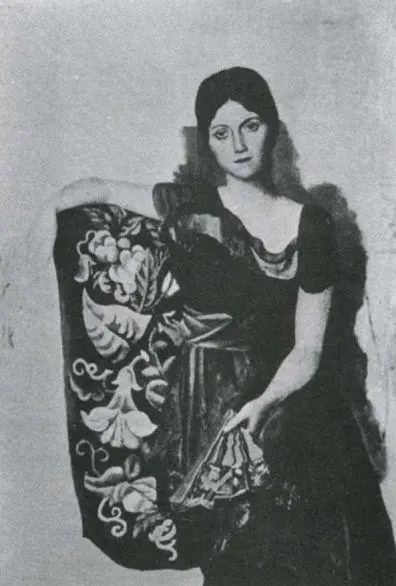
47 Picasso. Olga Picasso in an Armchair. 1917
According to Apollinaire’s distinction, Picasso has re-become an artist of the first type. He has re-acquired his prodigious skill, his uniqueness, and his ease. This particular portrait is so stuffy — an haute bourgeoise complete with fan in a glass case on the china cabinet — that distaste may blind us somewhat to the skill. The skill is more obvious in the drawing of Bathers.
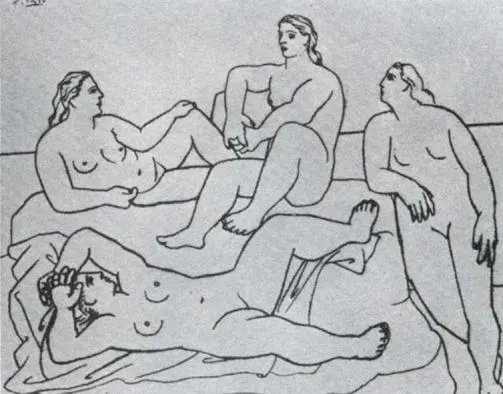
48 Picasso. Bathers. 1921
The legend of Picasso as a magician now begins. It is said that he can do anything with a shape or a line. This legend is to culminate much later in the famous sequence of Picasso drawing with light from an electric torch in the film made by Clouzot and aptly called Le Mystère Picasso.
He did not of course revert to what he had been in 1906. He never forgot the experience of Cubism. The woman lying on her back in the Bathers is drawn in a way that would have been impossible before 1910. And soon Picasso was to re-apply the lessons of Cubism in a far more violent and original way. But, except on the very rare occasions when he has been deeply moved, the struggle and what Apollinaire called ‘the stammering’ has gone. The prodigy has been re-born.
Picasso was now not only successful, he was also exotic. The circle in which he moved could not have accepted him on any other terms except those of exoticism. Beneath his perfectly-made dinner-jacket he wore a bullfighter’s cummerbund. For a ball given by Comte Étienne de Beaumont he dressed as a matador. He designed three more ballets for Diaghilev. Compared with Parade they were conventional and romantic. One was set in Naples and the other two in ‘picturesque’ Spain.
Читать дальше
